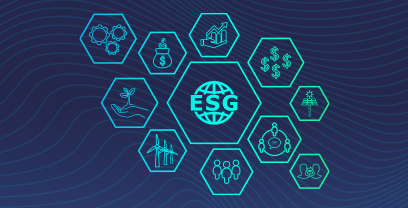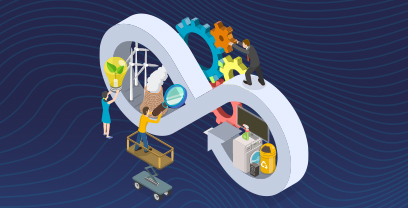|
The Forrester Wave™: Supplier Value Management Platforms, Q3 2024 See Report
Blog »
Net Zero Pledges are Reaching “critical mass”, but can they cause a Chain Reaction?

by Ian Thompson
Progress on sustainability is notoriously hard to measure for organizations, but the needle is moving in the right direction. A new report from the Science-Based Targets Initiative (SBTI) found that 2,000 firms across 70 countries worth $38 trillion have set emissions reductions targets that line up with the science.
It’s incredible to see the strides we’ve made over the past year or so. But, of course, there are still significant challenges ahead on the road to a greener future. According to the SBTI, the next hurdle lies outside of organizations’ four walls in organizations’ supply chains. The report explains that:
“Scope 3 emissions reduction is a key challenge for companies, often due to a lack of visibility and monitoring of suppliers’ data. Companies also face engagement gaps between their suppliers and procurement teams.”
Closing these visibility and engagement gaps is critical to reducing emissions, but we’re a long way off. Spend Matters found that almost 70% of organization’s emissions come from their supply chain. However, our latest supplier sustainability research found that just 24% of suppliers are being measured routinely on carbon emissions.
The SBTI is conducting a review into scope 3 targets and criteria. But time is of the essence for organizations. Laggards in sustainability will quickly find themselves left in the dust of competitors. So, how can organizations do more to measure emissions across their supply chains?
Look at the view to stamp out CO2
A key challenge for organizations is that most industries suffer from inaccurate and unreliable supplier data that is dispersed in silos. This makes it much more challenging to bring together emissions from within the organization, third parties, and suppliers, and see a complete picture of carbon emissions.
This is why a smarter approach to procurement is critical. It will enable organizations to gain a 360-degree view of their entire supply chain, by bringing together supplier and third-party data on everything from environmental impact to supplier capabilities. This single source of truth will include data from immediate suppliers, sub-tier suppliers, and subcontractors – which helps to ensure that green promises are not just surface-level.
Collaborate to Innovate
Organizations can also work more closely with suppliers to reduce their emissions, working to build green initiatives together instead of laying down the law with prescriptive sustainability targets. For example, Groupe ADP adopted a smarter approach to procurement to collaborate with suppliers on CSR initiatives. This led to it almost doubling its independently-rated CSR score, while still driving savings of 10% each year.
More than ever, suppliers are aware of the responsibility that should be placed on them as part of a more tight-knit, open, and collaborative relationship. It’s now time for organizations to look beyond their own headquarters, invest in their supply chains, and to convert that expectation into action.
It is now up to the organizations themselves to pledge their allegiance and get involved with this worldwide initiative. Suppliers are already aware of the weight that should be placed on their shoulders, so it is only a matter of time before more and more companies start making meaningful change. Net Zero pledges are reaching “critical mass” – will your organization be next? Together, we can create a chain reaction that resulted in real, sustainable change for our planet.
Sharing intel will be vital
Moving towards a more sustainable future isn’t just about taking steps within organizations; it’s also important to share progress and collaborate with others. By pooling resources, we can magnify our collective efficacy in creating substantial changes at all levels of sustainability.
Achieving a sustainable future is a responsibility that falls on all of us. It’s not something that any one organization or individual can accomplish on their own. We need to Collaborate, communicate, and pool our resources if we want to make substantial progress. Luckily, it seems like more and more people and organizations are coming to this realization. The number of companies making Net Zero pledges has reached “critical mass” according to some analysts. With so many voices working towards sustainability, maybe we can finally create the Chain Reaction needed to achieve real change.

Ian Thompson
VP Sales, Northern Europe
Ian Thompson has worked in procurement and supply chain technologies for most of his 22 year career. He has worked both in project and commercial leadership positions for the past decade including Sourcing, Supply Chain Integration, P2P as well as within Fintech payments initiatives. An optimistic pragmatist, Ian enjoys watching his colleagues and teams succeed both personally and professionally


